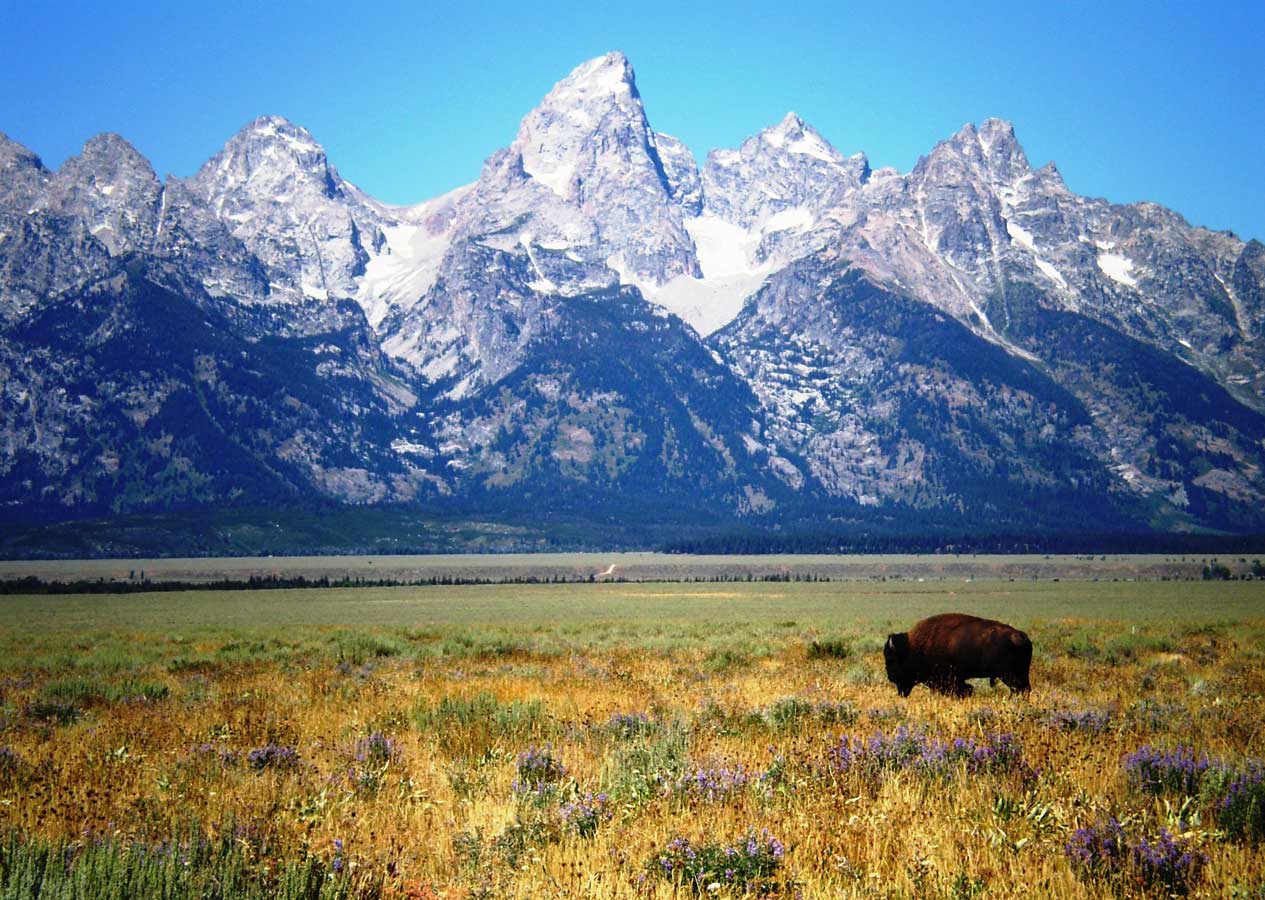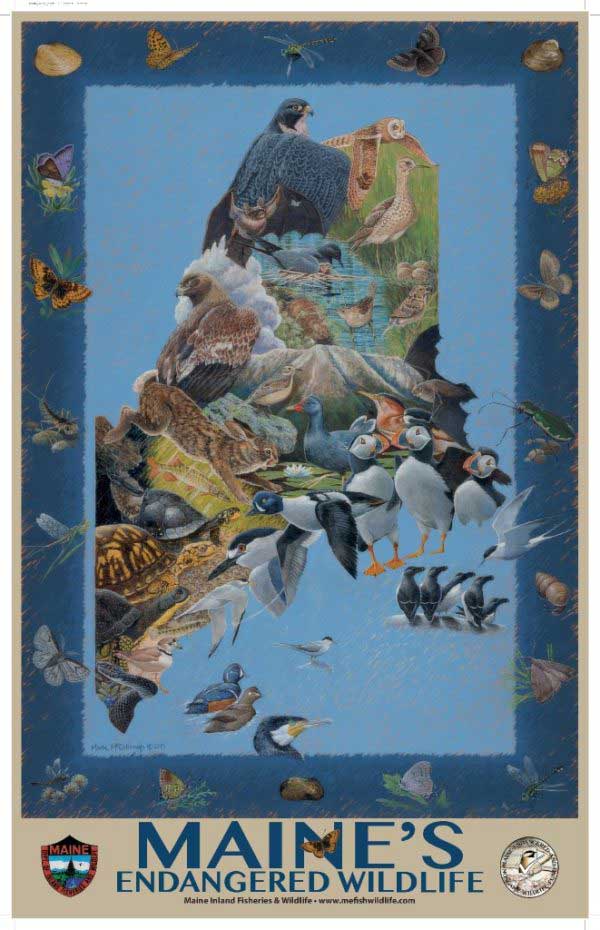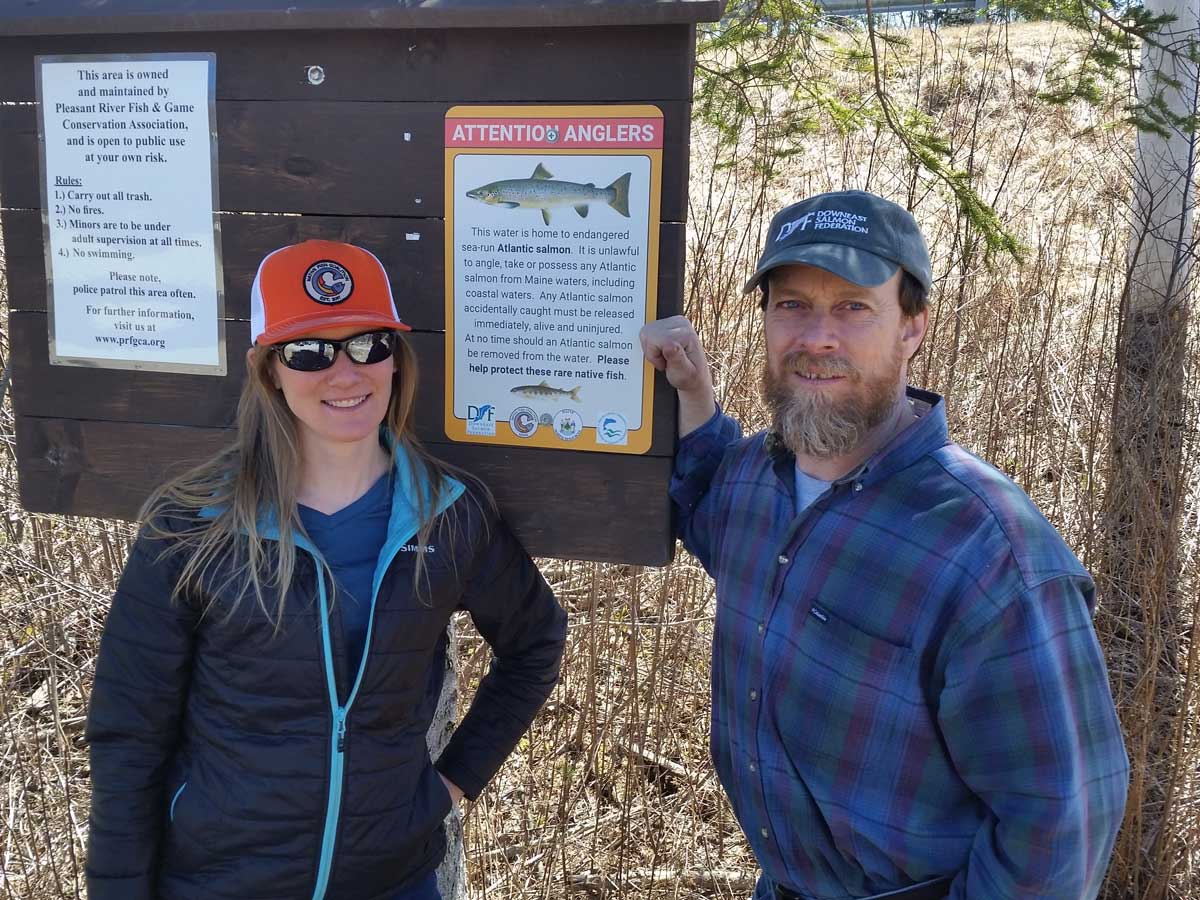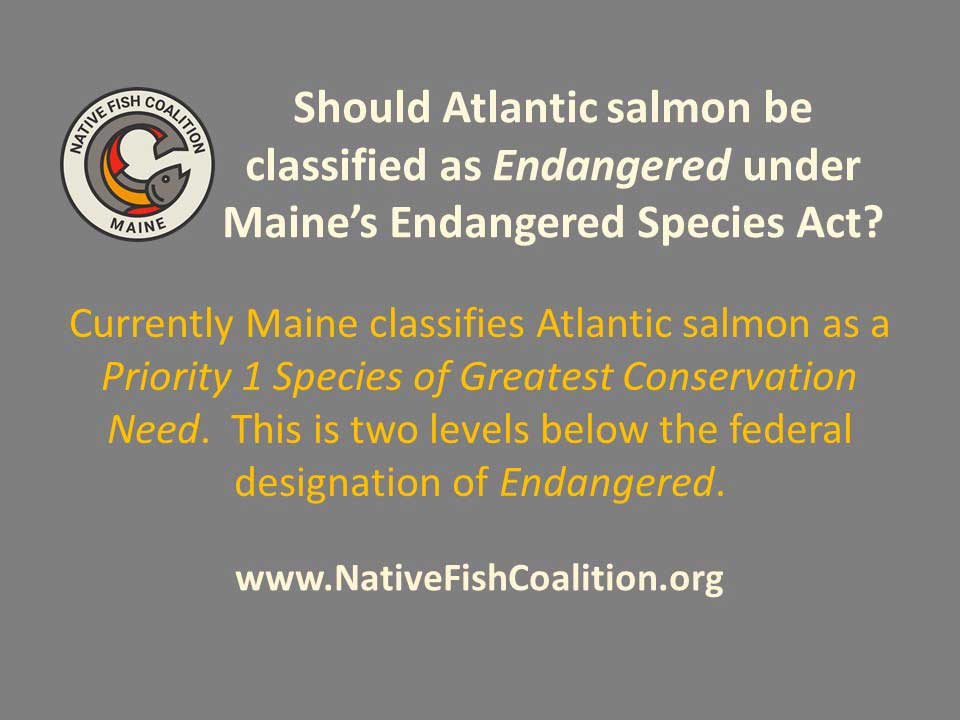States Defying the Federal ESA: Bad Science and Bad Politics

While once teetering on the brink of extinction in the United State, bison are now a common sight across much of the Rocky Mountain west | Diana Mallard photo
Editor’s Note: This is the seventh article in our series on fly fishing conservation. This series appears with the support of Swift Fly Fishing, makers of Epic Fly Rods.
As a sportsman and conservationist, I can’t overstate the importance of the federal Endangered Species Act (ESA). Without this tool, it would be up to states to do the right thing in regard to preventing species from going extinct. Unfortunately, that means we would be at the mercy of state fish and game agencies, most of which are beholden to sportsmen, and in some cases, state marine fisheries agencies who are very much influenced by commercial interests. And both are influenced by legislators and lobbyists. Unfortunately, many state agencies see rare species as problematic as they believe they get in the way of fishing, hunting, and where applicable, commercial fishing.
ESA Background
There were several precursors to the ESA. The first was the Lacey Act of 1900, which abolished commercial hunting and interstate commerce of certain wildlife and plants. Next up was the Migratory Bird Treaty Act of 1918 which made it illegal to hunt birds that migrated between the United States and Canada. In 1940, the Bald and Golden Eagle Protection Act was passed, prohibiting the harassing, harming, or killing of bald eagles and golden eagles.
In 1966, the U.S. Congress passed the Endangered Species Preservation Act. This resulted in a list of animals that were considered endangered, and prohibited the taking of these on national wildlife refuges, as well as requiring that the Departments of Interior, Agriculture, and Defense preserve critical habitat on federally owned lands. The U.S. Fish and Wildlife Service was instructed to procure additional land to help protect these species where needed as well. Congress amended the law in 1969 to prohibit the importation and sale of internationally endangered animals.
Congress passed the Marine Mammal Protection Act in 1972. This prohibited the taking of marine mammals (dolphins, dugong, manatees, polar bears, porpoises, seals, sea lions, sea otters, walruses, and whales) from waters within the United States jurisdiction. The law was administered by the U.S. National Oceanic and Atmospheric Administration (NOAA).
The ESA was passed by the U.S. Congress in 1973, and signed into law by President Nixon as part of his environmental policy. The bill was introduced by U.S. Senator Harrison A. Williams, and passed by the Senate unanimously. It was approved by the House 390 to 12. The bill was authored by legislative attorneys and scientists, as well as Russell Train, the first Chair of the White House Council on Environmental Quality, and second Administrator of the Environmental Protection Agency.
The purpose of the ESA is to protect and restore at-risk species and the ecosystems they depend on. It is administered by the U.S. Fish and Wildlife Service and National Marine Fisheries Service, better known as NOAA Fisheries. The former has primary responsibility for inland and freshwater species, while the latter has responsibility for marine species, as well as anadromous fish such as salmon, sturgeon, shad, and river herring.
Under the ESA, species may be listed as either Endangered or Threatened. Endangered means that the species is at risk of extinction throughout all or a significant portion of its range. Threatened means a species is likely to become Endangered within the foreseeable future. All species of animals and plants are eligible for protection under the ESA, as are subspecies, life history strategies, and specific populations which are referred to as Distinct Population Segments (DPS).
“It has only been in recent years that efforts have been undertaken to list and protect those species of animals whose continued existence is in jeopardy. Starting with our national symbol, the bald eagle, we have expanded our concern over the extinction of these animals to include the present list of over 100. We have already found, however, that even the most recent act to protect endangered species, which dates only from 1969, simply does not provide the kind of management tools needed to act early enough to save a vanishing species. ” – President Richard M. Nixon
State-Level ESAs
State ESA programs allow for state-only listings, and up-listing of federally listed species (threatened to endangered), when the situation at the state level is worse than it is at the national level. They are not intended to challenge federal listings, as by the time the federal government lists a species as threatened or endangered under the ESA, it is in trouble throughout its range. Failing to list a federally-listed species at the state level flies in the face of the intent of both federal and state law.
Thirty-six states (or 72%) mandate state-level listing of all federally listed species found in their state, and at the same level or higher. Four other states have statutes that say state listing of federally listed species is “recommended” or “highly recommended.” Only 10 states – Alabama, Alaska, Arkansas, California, Colorado, Maine, Nevada, South Dakota, West Virginia, and Wyoming – do not require, or even recommend, listing federally-listed species at the state level. And to be fair, in the case of Alaska, California and Colorado, most federally-listed species are listed at the state level.
A Case Study in Jurisdictional Conflicts
Maine has two state-level ESA programs: Maine Endangered Species Act (MESA) and Maine Marine Endangered Species Act (MMESA.) MESA was enacted in 1975, two years after the federal ESA was established. It was managed by Maine Department of Inland Fisheries and Wildlife (MDIFW) and Maine Department of Marine Resources (MDMR) depending on the species. MMESA was enacted in 2003 to separate inland from marine species. At that time, all previously listed marine species were transferred from MESA to MMESA, and by default from MDIFW to MDMR.
“The Legislature finds that various species of fish and wildlife have been and are in danger of being rendered extinct within the state of Maine, and that these species are of esthetic, ecological, educational, historical, recreational and scientific value to the people of the State. The Legislature, therefore, declares that it is the policy of the State to conserve, by according such protection as is necessary to maintain and enhance their numbers, all species of fish or wildlife found in the State, as well as the ecosystems upon which they depend.” – 107th Maine Legislature, 1975
From 1975 through 1994, federally-listed species were automatically listed at the state level under MESA. In 1995, the Maine Legislature (LD 428) eliminated the mandatory listing of federally-listed species provision, requiring that all new state listings be approved by the legislature. In 1996, the legislature passed an emergency bill (LD 1645) that changed the designation of Endangered species from the Secretary of the Interior to the Commissioner of MDIFW.
Under current Maine law, requesting the listing of any species under MESA or MMESA is at the discretion of the MDIFW and MDMR Commissioners, respectively. Once requested, the Maine legislature has the sole authority to act or not act, placing the responsibility for state-level ESA listing in the hands of politicians not scientists. And to be clear, unless the MDIFW or MDMR Commissioner suggests a listing, it never gets to the legislature.
Currently, just 10 out of 16 species listed as threatened or endangered at the federal level that are found in Maine are listed at the state level. The 6 that are not included are Atlantic salmon (2009), Atlantic sturgeon (2012), blue whale (1970), Canada lynx (2000), green turtle (2016), and red knot (2014). Two species would fall under MESA and four under MMESA, and all except blue whale were listed at the federal level after Maine removed the mandatory listing clause from MESA.
The most egregious omission from Maine’s ESA programs is Atlantic salmon. Classified as Endangered at the national level, wild native Atlantic salmon in the United States persist only in Maine, and they are hanging by a thread. Restoration efforts in Connecticut, Massachusetts, New Hampshire, and Vermont have been suspended for the most part, leaving Maine as the last hope we have of preventing Atlantic salmon from going extinct in the United States. But according to Maine, Atlantic salmon are not endangered, or even threatened.
Atlantic salmon are however listed as a Priority 1 Species of Greatest Conservation Need under the MDIFW authored 2015 Wildlife Action Plan. This is two levels below Endangered, and the same classification given to Arctic charr (formerly known as blueback trout and Sunapee trout,) a rare but not critically endangered species in Maine. Wildlife Action Plans are required by the federal government to be eligible for funding under the State Wildlife Grant Program which provides money for fish, wildlife, and habitat work, including both game and non-game species.

Unfortunately, membership in this club is by invite only, and at the whim of state bureaucrats and legislators.
How Endangered are Maine’s Atlantic Salmon?
According to a recently released report from NOAA, Atlantic salmon are once again a focal species under their Species in the Spotlight program. Started in 2015, the program provides additional exposure to those species most at risk of going away. In the recently released report, Maine’s Atlantic salmon are one of only nine species that meet the criteria for inclusion in the program:
“The criteria for Species in the Spotlight are that they are endangered, their populations are declining, and they are considered a recovery priority #1C… A recovery priority #1C species is one whose extinction is almost certain in the immediate future because of rapid population decline or habitat destruction, and because of conflicts with construction, development, or economic activity.” – NOAA, SPECIES in the SPOTLIGHT Priority Actions 2021–2025
According to NOAA, “The Gulf of Maine DPS of Atlantic salmon was selected as one of the species under [the Species in the Spotlight program] because of its critically low abundance and its continuing decline.” It’s important to note that Atlantic salmon were also listed under the Species in the Spotlight program in 2015, an indication that the situation has not improved to any great degree in the last six years.
Trying to Right a Wrong
Recent requests by conservationists, native fish advocates, scientists, and former MDIFW, MDMR, and former Maine Department of Environmental Protection administrators and biologists to list Atlantic salmon as Endangered at the state level were declined. The first request was sent to MDIFW and was specific to MESA. Interestingly, the reply was signed by both the MDIFW Commissioner and MDMR Commissioner, and amounted to a refusal in regard to MESA and MMESA, even though the request was specific to MESA.
Among other concerns, the coalition noted that MDIFW was stocking nonnative brown trout in critically important Atlantic salmon waters, allowing the use of high-impact bait which comes with a 30% incidental mortality rate, failing to protect juvenile salmon from species misidentification, protecting nonnative bass, and failing to control invasive fish.
MDIFW noted that Atlantic salmon were a marine species and therefore not eligible for protection under MESA. They went on to say that since MDIFW and MDMR were cooperating with the federal government, “…a recommendation for state listing of Atlantic salmon by DMR does not offer any conservation benefits…” They also said, “The listing does however cause a workload issue that does not justify the ends.” Interestingly, and in direct conflict with what MDIFW said, the MESA web page states the following:
“Separating [listing and management] allows [MDIFW] to recommend species for listing based solely on biological facts, thus purely reflecting the species’ likelihood of extinction within Maine. The Department makes the decision without being constrained by political pressures; limits on agency funding, staffing, or management capabilities; the ease or difficulty of managing a species; or by a species’ potential responsiveness or lack of responsiveness to management.” – Maine Department of Inland Fisheries and Wildlife
The coalition then sent a formal letter to MDMR requesting that they consider listing Atlantic salmon as Endangered under MMESA. As expected, the request was refused as it had been earlier, and inappropriately. MDMR referenced their initial response, while stating that a listing would be “symbolic” and of no “meaningful benefit.” And again, the implication was that everyone was doing everything they could to prevent Atlantic salmon from going extinct.
Among other concerns, the coalition noted that rules in place for brown trout and landlocked salmon in coastal waters (2-fish, 12-inch minimum length, and 25-inch maximum length) do not protect sub-adult Atlantic salmon known as grilse from recreational anglers. And in many cases, state-owned dams lack safe fish-passage.
As for MDMR, here’s what they had to say about Atlantic salmon in their 2020 Kennebec River Management Plan Diadromous Resources Amendment, an amendment to the states comprehensive 1993 Kennebec River Resource Management Plan. It’s not that MDMR does not agree that the species is in big trouble, they just believe that a state-level listing under MMESA wouldn’t be worth the effort required to administer it:
“Restoration of Atlantic salmon, American shad, blueback herring, alewife, and sea lamprey has lagged on the mainstem Kennebec River, primarily because of the lack of upstream fish passage. This situation is particular critical for the endangered Gulf of Maine (GOM) Distinct Population Segment (DPS) of Atlantic salmon, one of the most iconic and imperiled species in the United States.” – Maine Department of Marine Resources
The coalition also sent letters to both MDIFW and MDMR rebutting their refusals to list Atlantic salmon at the state level. These letters outlined specific concerns, as well as challenging the appropriateness of addressing the request specific to MDIFW and MESA with a pre-emptive and unsolicited response/refusal in regard to MDMR and MMESA.
Unable to convince the agencies responsible for the well-being of Atlantic salmon and other at-risk species to act in regard to state-level listings, the original coalition along with a number of other organizations who have signed on, is taking their case to the Maine legislature. The coalition is working with legislators in regard to LD 883: An Act to Protect Endangered Species Whose Life Cycles Include Maine Land or Waters, to reinstate the mandatory state-level listing of federally-listed species.
To be clear, while nothing is hampering Atlantic salmon recovery more than the lack of fish passage, including state-owned dams, at this point every fish matters and failing to protect them from introduced predators and anglers, as well as addressing habitat issues is compromising restoration efforts. A state listing would help get MDIFW and MDMR on the same page, while driving home the seriousness of the situation and the importance of Atlantic salmon.
People in Glass Houses…
In March 2021, first term Maine Governor Janet Mills entered the Atlantic salmon conservation arena when she took on the owner of four dams on the Kennebec River, challenging them to provide fish-passage or remove the dams. This was a clear and positive policy shift from the days when then governor and now U.S. Senator Angus King, and former U.S. Senator Olympia Snowe opposed the federal listing of Atlantic salmon.
With the support of Governor Mills, MDMR submitted a proposal to address the Kennebec River Dams. The proposal was challenged by Brookfield Renewable Energy, the owner of the dams. Two state Senators from counties along the Kennebec opposed the plan as well, using a legal technicality to make their case. Unable to defend their position and actions, Mills and MDMR withdrew their proposal and will now regroup to address the legal questions as to what agency should submit the request.
Would a state-level listing for Atlantic salmon under MMESA have helped Mills’ and MDMR’s cause? Will the lack of one be used against them if they try to resubmit the proposal? With so much at stake, including town property tax losses, private sector mitigation costs, and opposition from riverside property owners, as well as industry paid lobbyists involved, you can be sure those in opposition of the plan to remove these dams are looking for cracks in Mills’ and MDMR’s position and argument.
As the battle to save Atlantic salmon from extinction in the United States ramps up on Maine’s Kennebec River system, MDIFW management policies in regard to the critically important Sandy River will likely be scrutinized. The ongoing MDIFW-sponsored stocking of nonnative brown trout in the river, including 8,600 fish in 2019 alone, will be tough to defend. And the lack of effective fish-passage in regard to state-owned dams will be viewed as a case of “do as we say, not as we do.”
No one can challenge the basic premise that federally-listed species are in trouble at the state level wherever they are found. This is especially true in cases like Atlantic salmon where the species in question is only found in one state, and propped up almost solely through stocking. By default, and from a commonsense perspective, if Atlantic salmon are endangered at the federal level, and they only exist in Maine, they are endangered at the state level in Maine.
If state-level ESA’s such as Maine’s MESA and MMESA do not offer any conservation benefits for federally listed species, why have them, and why do we list any species at all at the state level? As noted above, 10 of 16 federally listed species present in Maine are listed at the state level under either MESA or MMESA. And when it comes to protecting a species from extinction, workload should not be a consideration, a position that MDIFW apparently agrees with and has documented on their website.
As for symbolism, it plays a huge role in regard to how something is perceived, and what we are willing to do to save it. Would we have saved the bald eagle from the brink of extinction if they were not our National Bird? Would we still have bison, our National Mammal ? Wolves? Grizzlies? And while we do not have a National Fish, if we did, you could make a very strong argument for the Atlantic salmon, known as the King of Fish and the Presidential Fish.

Native Fish Coalition National Vice Chair Emily Bastian and Downeast Salmon Federation Executive Director Dwayne Shaw in front of an informational sign denoting the presence of endangered Atlantic salmon in Maine’s Pleasant River | Bob Mallard photo
The underlying issue here is whether Maine and other states are doing everything they can to prevent federally-listed species such as Atlantic salmon from going extinct and if not, would a state-level ESA listing in states that do not require such, help achieve this. The belief of those involved in the requests to MDIFW and MDMR to list Atlantic salmon and other federally-listed species at the state level is no, some states are not doing everything they can to prevent the extinction of species found in their states, and yes, the mandatory state-level listing of federally-listed species would help support recovery efforts.
It’s time for Maine and the other nine states who are not listing federally-listed species at the state level to put science ahead of politics, turf, and unfounded paranoia, and fully embrace the intent of the federal ESA program and their own state ESA programs where applicable. The current application of MESA and MMESA in Maine is arbitrary and inconsistent, and indefensible when it comes to a species like Atlantic salmon that exists only in Maine, and is not only federally endangered but critically endangered.
This article appears with the support of Swift Fly Fishing, makers of Epic Fly Rods.











